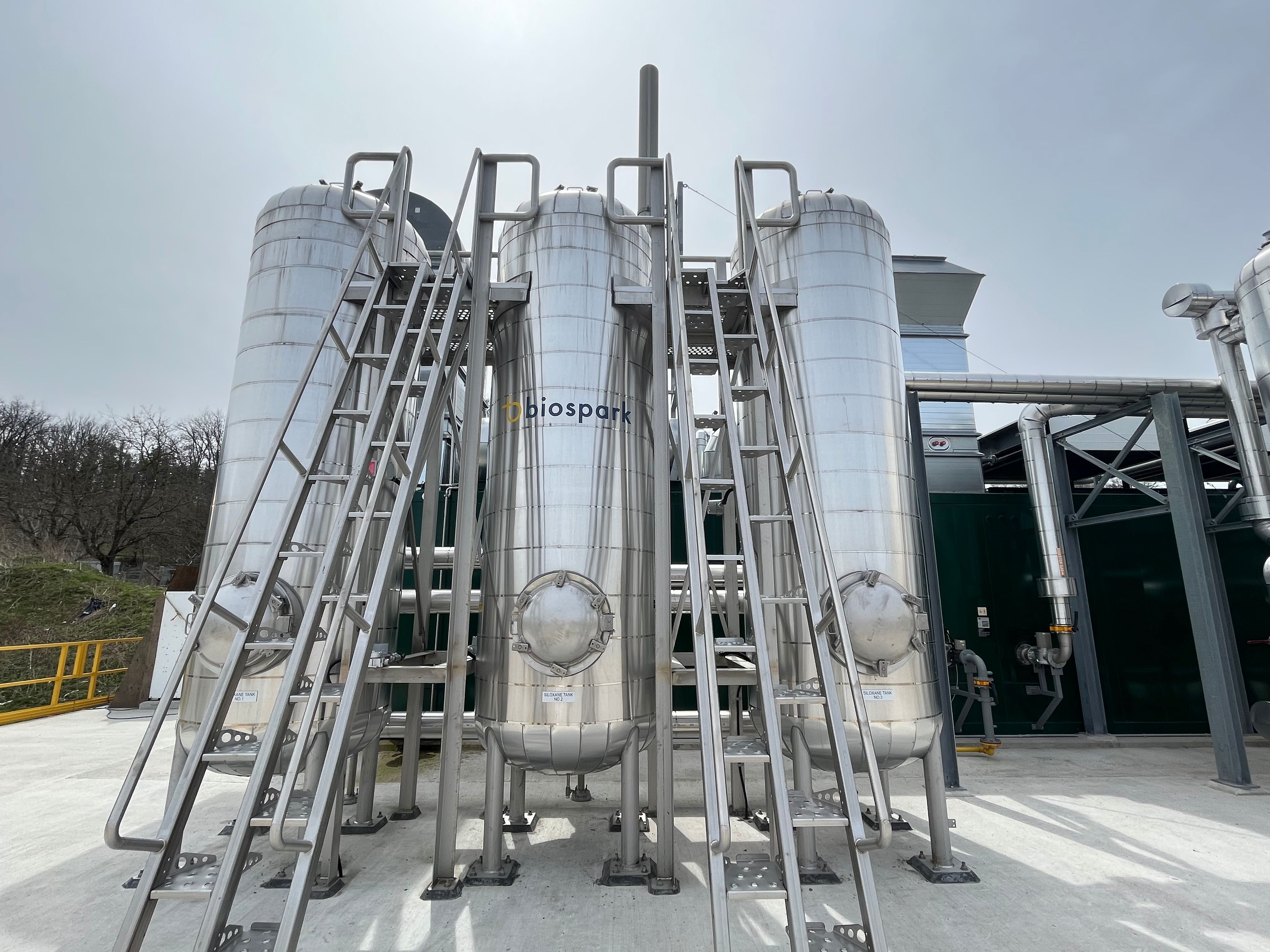
Background
The Region of Waterloo in southern Ontario treats its wastewater at a number of plants including the three largest: Waterloo, Kitchener and Galt. These three plants produce 13,000 to 22,200 cubic metres of methane-rich biogas per day (equivalent to the carbon footprint of 2,700 people) as a byproduct of processing. They use some of this biogas to produce heat for their own use, while flaring off excess biogas and purchasing electricity from the grid for their energy needs.
As the Region’s population grows, the amount of wastewater is expected to increase, leading to higher electricity consumption and emissions created from flaring biogas—both of which are contrary to the Region’s mandate to improve air quality, reduce greenhouse gas emissions and produce and use renewable energy. Electricity costs in Ontario are also expected to rise, increasing municipal costs. The Region saw these projections as an opportunity to upgrade facility infrastructure to better align with climate change–related goals and help in the transition toward net zero.
Project goals
The Region planned to lower electricity costs and eliminate biogas flaring by installing dual-fuel (biogas and natural gas) cogeneration facilities at all three wastewater treatment plants. These facilities would utilize 100 percent of their biogas and reduce emissions.
Approach
The planning phases for the project involved projecting population growth (and the corresponding increase in wastewater quantities) and determining how that would affect the plants’ capacities and electricity and heat requirements. Modelling suggested that while the cogeneration facilities would initially use natural gas as a supplement, the proportion of natural gas needed would decrease as additional wastewater and therefore biogas became available.
One key idea was to coordinate facility capacity with population growth over the equipment’s estimated 20-year lifespan to maximize biogas usage and reduce emissions, rather than matching their capacity to current biogas availability.
After consulting with community members and other stakeholders, the Region designed and constructed the project. They completed and brought the cogeneration facilities online in 2022.
Results
Upon project completion, the Region began monitoring and optimizing performance. They diverted all biogas into the new system, eliminating that source of emissions while also creating electricity and heat, providing an annual savings of $1.5 million and approximately 1,900 tons of carbon dioxide equivalent (tCO2e). Over the 20-year lifespan of the facilities, the Region forecasts overall net savings of more than $16 million and 38,000 tCO2e.
The project won a 2022 Award of Excellence at the Canadian Consulting Engineering Awards.
Lessons learned
This project was highly complex both technically and contractually. The Region found it helpful to have a single contractor responsible for all three facility installations to find efficiencies and learnings throughout the development process. For instance, they redirected workers from site to site as needed to minimize downtime.
Working with multiple facilities also meant working with multiple electricity distribution companies. Fully understanding the differences between various local connection requirements and approval processes from the outset would have helped avoid delays.
Better understanding how the gas conditioning and cogeneration systems interface with each other would made it easier for operations staff to troubleshoot issues and seek technical support. Entering a long-term service agreement with the gas conditioning supplier, like the one with the cogeneration supplier, may also have been beneficial.
A certain amount of technical troubleshooting related to with thermal efficiencies was required at system launch, which could have been avoided with a clearer understanding in advance of how the hot water loop systems were set up.
Next steps
The facilities are now in operation and ready to utilize current biogas levels as well as increased levels in the future as the population grows. As the amount of available biogas increases, the need for natural gas required will decrease—until eventually, there might be minimal to no need for it at all.

Want to explore all GMF-funded projects? Check out the Projects Database for a complete overview of funded projects and get inspired by municipalities of all sizes, across Canada.
Available funding
We support projects at various stages of development through grants and loans. Funding amounts are based on total eligible costs. Further details on eligible costs are provided on individual funding pages.
Business case: Organic Waste-to-Energy
Funding to assess viable waste-to-energy systems and business models
Read moreStudy: Organic Waste-to-Energy
Funding to outline the design of new organic waste-to-energy plants and systems
Read moreCapital project: Organic Waste-to-Energy
Funding to construct, commission and begin operation of an organic waste-to-energy system
Read more
